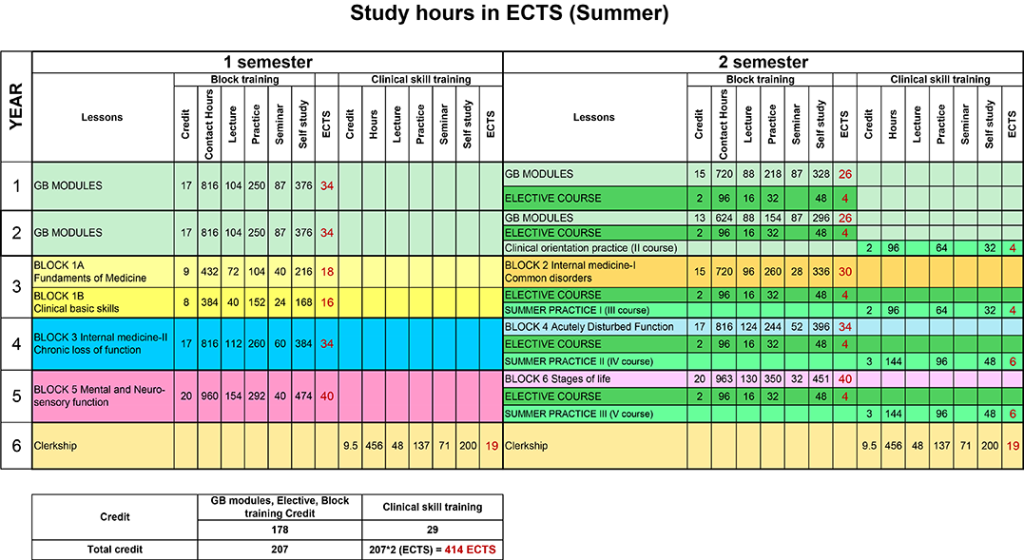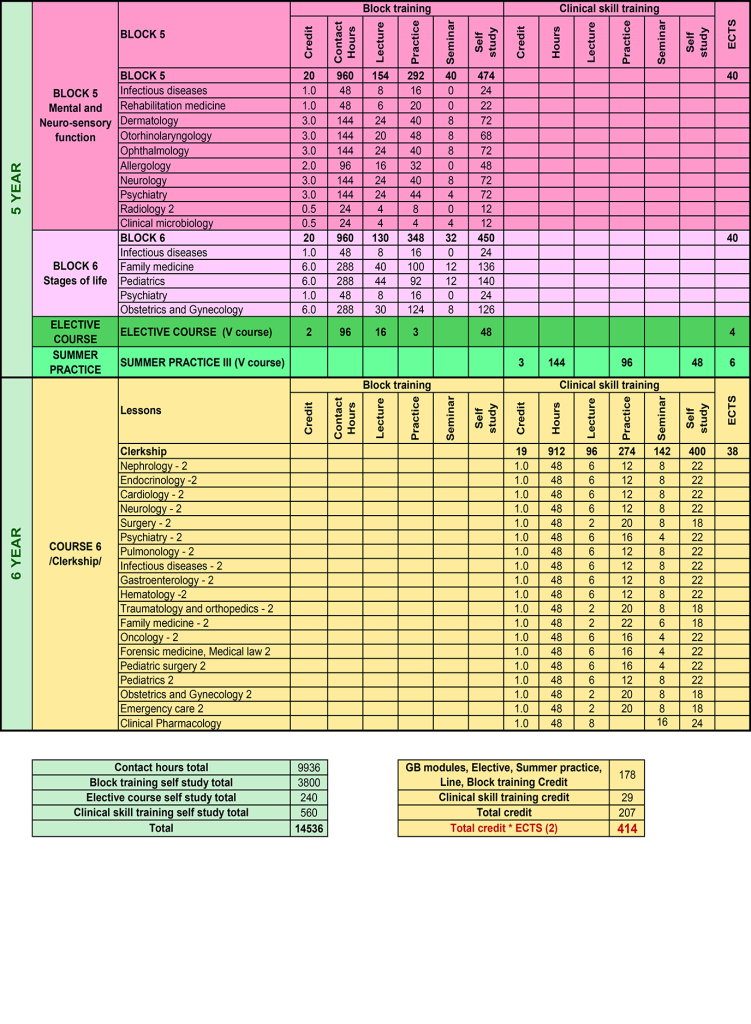The Undergraduate Program for Medical doctor is a study program offered by School of Medicine (SoM), Mongolian National University of Medical Sciences (MNUMS). It operates under the administration of the MNUMS, which also manages 18 undergraduate , 120 postgraduate degree programs , all in fields closely related to medicine, public health, nursing etc.
Type of program
Bachelor Degree program for Medical Doctor, is a full-time, system based block integrated, 6-year undergraduate program, which is offered by SoM, MNUMS. The program is mainly intended for Mongolian students and but open for foreign students as well. Aim of the program is to prepare a competent “Medical Doctor” who is broadly educated and capable to work ethically and effectively in primary health care service, to continue advanced level of medical education. The departments of SoM have the primary purpose to prepare specialists with superior characteristics by implementing the Block Integrated Curriculum which consists of 28 basic science subjects, 6 basic professional blocks (all departments of SoM participating in one block curriculum), professional training and clerkship with 17 rotations and 8 basic elective courses and 33 clinical elective courses.
Basic science courses for freshmen are intended to give the students basic knowledge on general science needed for undertaking higher education, for personal development to be humane and to lay the foundation for further study of professional courses. Basic professional courses are generally studied during years I, II and these give them the capacity to undertake basic medical education. The content, the selection and the sequence of the courses are decided by the stipulations of the educational policy of the MNUMS. Clinical line and clerkship is a clinical science course which are self-directed program that plays an important role in improving the application of their theoretical knowledge, gained from the block lessons, gaining practical experience, developing their clinical skills and capabilities, and formulates the structure of their medical ethics and motivations required to become a competent medical doctor.
Basic professional and clinical sciences blocks are being using following teaching methods: case based training, integrated seminars, blended learning, distance learning, problem based learning, clinical bedside training and SCORPIO (The key elements of the system are that it is Structured, Clinical, Objective Referenced, Problem-based, Integrated and Organized). SCORPIO involves delivering a syllabus through a series of lecture-demonstrations at which students, teachers and patients gather at a defined area. Following a short introductory lecture, students rotate in small groups, through a series of teaching stations. Some certain blocks are being using video-based learning and computer based learning. The PBL training method has become one of the most successful methods using in training.
In Mongolia, primary and secondary education formerly lasted 10 years, without college degrees, but was expanded to 11 years in 2002. Since the 2008–2009 school years, new first-graders are using the 12-year system, and a full transition to the 12-year system will not occur until the 2019–2020 school year, when the current eight-graders graduate. Yet, in new 12-year system of secondary education, the college degree is still missing. Therefore, curriculum of Medical doctor was structured in 12 semesters. In 2014, we have changed block model of curriculum from 6 full years to 2+4 years program. First 2 years, all students need to fulfill premedical course. Those who got the required score will continue his/her study in medical course for next 4 years.
Final degree
In accordance with the University President’s order the Bachelor degree in Medicine and professional title of Medical Doctor are awarded to graduates from Undergraduate Program in Medical Doctor. Common form of the Bachelor degree diploma approved by Education, Culture and Science Minister’s Decree in 2012.
Standard period of study and credit points gained
In line with Mongolian government regulation (Minister of Education and Science decree), the Bachelor degree in Medicine is acquired after completion of 207 credit hours (hereafter referred to as credit units/CU), which consists of 374 CU of compulsory courses and 40 CU of elective courses. Required courses are normally completed in six years (twelve semesters). Compared to the ECTS system, the total number of credit units gained in the entire degree program is equivalent to 388 (207 x 2.0 = 414.0) ECTS credit points. In Mongolia, 1 credit unit corresponds to 48 hours of workloud per 16 weeks. If more detailed, for every 1 hour of lecture students have 2 hours of self-study, for every 2 hours seminar or practice students have 1 hour of self-study per week. The academic year of MNUMS consists of two semesters, and the duration of each semester lasts for 20 weeks. Therefore, the avarage workloud per year is 40 CU or 1920 working hours. We assumed that 1 ECTS credit point equals 25-30 working hours. Therefore, to calculate conversion from CU to ECTS we used difference of 2.0.
Currently MNUMS does not have its teaching hospital. In spite of that, for implementation of Medical doctor program, SoM, MNUMS have signed long-time cooperation agreements with many other hospitals including private and public sectors where many faculties are stationed. By this agreement affiliated hospitals such as State central hospitals and National Centers provide us opportunity to use their facilities as bedside training.



